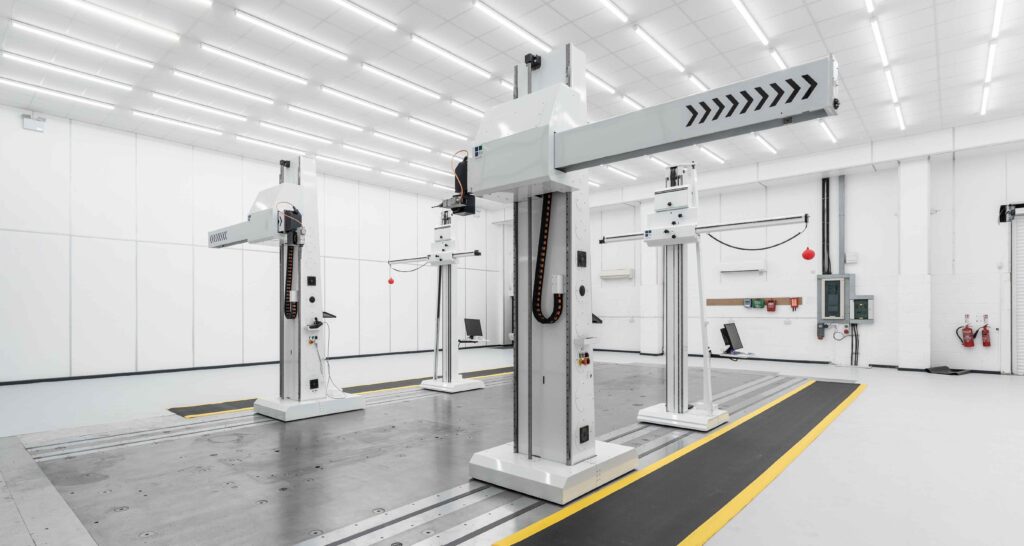
Industry Insight: Shifting Perceptions in Classic Restoration: How is the Landscape of Classic Cars Changing?
Posted September 3, 2025
As technology evolves, new questions about how automotive heritage is preserved and the future of restorations are being raised. The emergence of AI, cultural shifts, and new technologies are shaping the classic restoration landscape, shifting perceptions and definitions of what makes a classic car, and the methods by which they are restored.
What makes a Classic?
Several key characteristics determine what defines a car as a classic. While age is a key factor, historical significance, quality & engineering, cultural impact, rarity, and design are all factors that impact the vehicles classification as a classic. These cars are history and art, evoking nostalgia and deep emotional connections.
Traditional vs Modern Classic
The landscape of “what is a classic” is shifting. Traditional classics include the likes of Jaguar E-type (1961-1975), Ford Mustang (1964-1973), and Aston Martin DB5 (1963-1965), and are characterised by nostalgia and heritage. Vehicles from the 1990’s and early 2000’s, are being recognised as “modern classics”, such as Ferrari Enzo (2002-2004), Mclaren F1 (1992-1998), and Porsche 993 Turbo S (1995-1998). Contrasting traditional classics, these vehicles mark significant technological and design developments with unique styling and performance features giving them a collectable appeal.
The Future Definition of a Classic
Traditionally, classic vehicles are defined by their age, rarity, and significance, but as technology accelerates, will this shift the perception of what constitutes a classic vehicle? It may be that petrol-powered cars, representing the artistry and intuition of human-led design before the influence of AI and electrification, become classic. These vehicles may not be based on age, but what they represent: a driving experience controlled by the driver rather than software.
Since the 1960’s software and technological developments have shaped the industry from the introduction of digital dashboards in the 1980’s and onboard diagnostics in the 1990’s, to a move towards semi-autonomous systems in the 2010’s but still requiring human oversight. Today, a new era of AI integration is reshaping how cars are driven and how they will be driven in the future, with an emergence of self-driving cars in mainstream automotive development.
Shifting Policies
Modern policies are shaping the future of restoration and will enhance the way these vehicles are preserved and enjoyed. This is reflected in the DVLA’s new policies on registering repaired, restored, and modified vehicles highlighting how classic car restoration is changing. In simplifying the process for like-for-like repairs and providing clearer guidance on modifications and electrification, the new rules recognise the need for protecting automotive heritage while acknowledging the reality of evolving technologies.
Emerging Technologies
Contemporary tools enable restorers to more accurately address problems, optimising the cars performance. Advancements in machine learning and AI are set to further revolutionise the way that cars are restored. 3D printing technology allows for precise replicas of hard-to-find and discontinued parts to be manufactured which also transforms how cars are restored. Electrification perfectly blends tradition and innovation in classic restorations, allowing classic owners to preserve the beauty, character, and craftsmanship of classics, while also ensuring the cars remain functional and providing environmental benefits.
At the Heart of British Motoring
Envisage are based in Coventry – the heart of Britain’s motoring heritage. Coventry’s legacy of innovation and craftsmanship from iconic manufacturers means Envisage can draw from generations of skill, knowledge, and culture that have shaped the industry.
Expertise at Envisage
What sets us apart is our ability to combine traditional craftsmanship with cutting edge technology. Our skilled metal formers shape panels by hand with the same artistry that has been used for decades, while advanced techniques such as CAD design bring modern precision to restoration projects.
A driving force behind Envisage restorations, Andy Hunter, comments “Modern technology has changed the way restorations and recreations are done, like being able to accurately scan and recreate surfaces from original vehicles. The CAD data allows us to work closer to the original cars, this is also one of the biggest changes in classic restoration say from 40 years ago. However, with the drop in numbers of cars being restored the danger is that the skills required will be lost, lots of good work is being done at the Heritage Skills Academy at Bicester Motion and with modern apprenticeships to pass on these traditional skills.”
On the future of classic restorations and EV’s, he said “With some classics, EV conversions give the cars a new lease of life that they otherwise may not get. Many could have been scrapped and lost for ever, if it keeps classics on the road, it can only be a good thing.”
Whether you’re restoring an icon of the past or shaping a modern classic for the future, Envisage is the partner to make it possible. Get in touch to discuss your next project.


